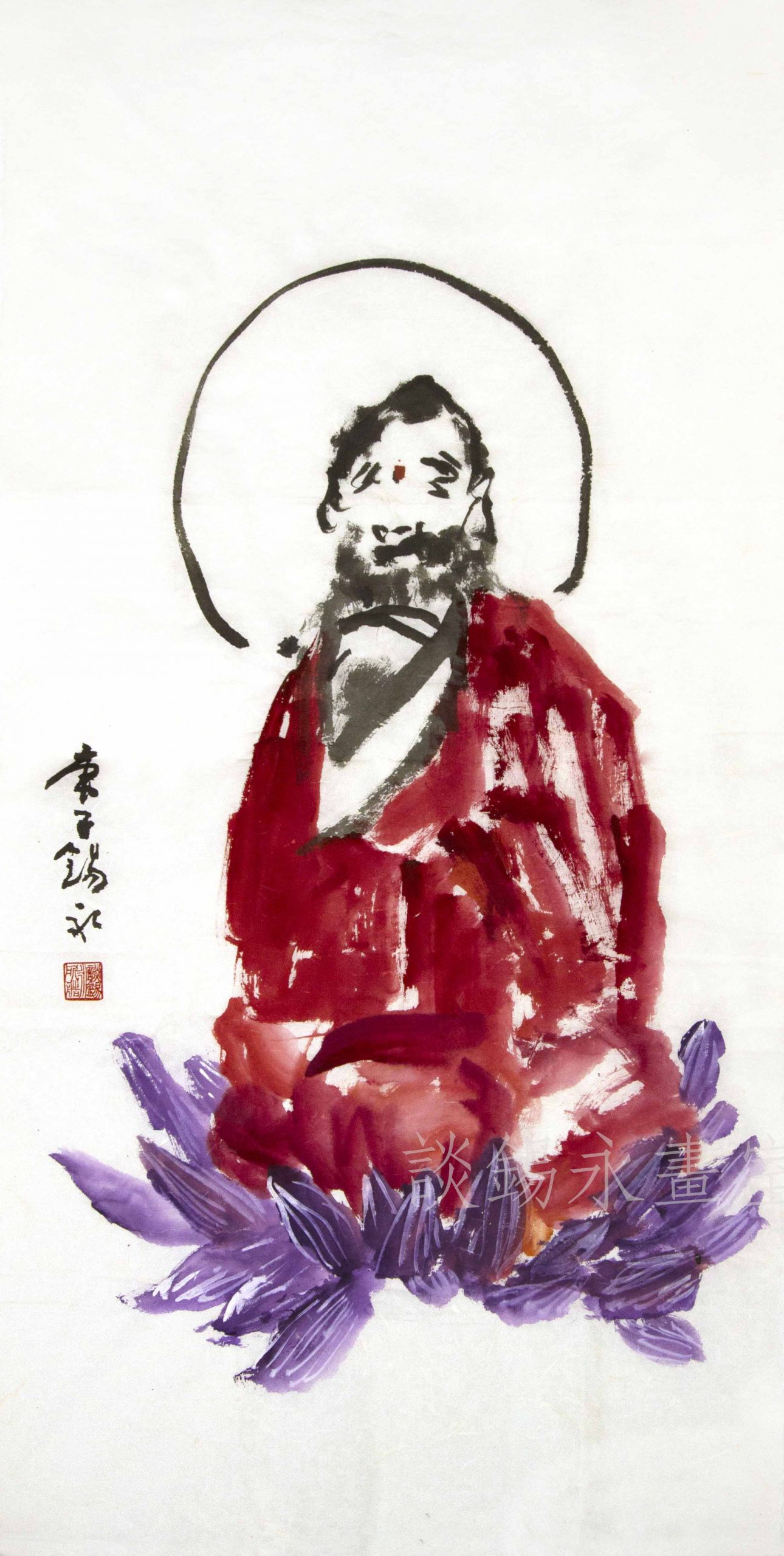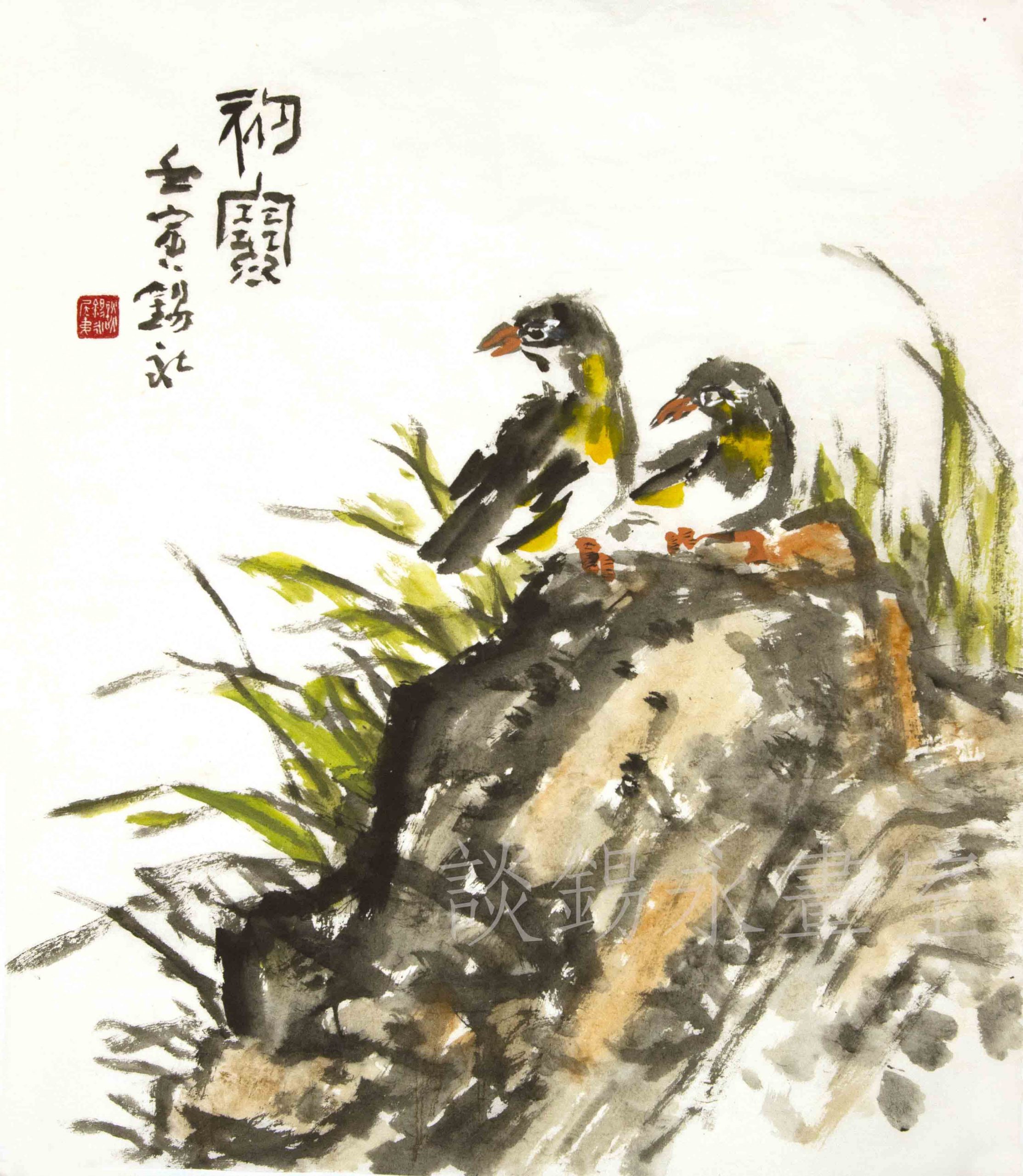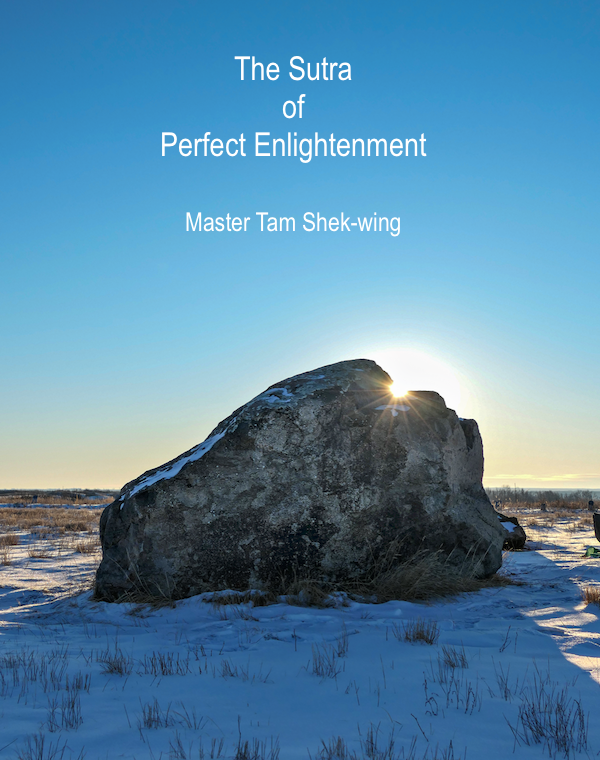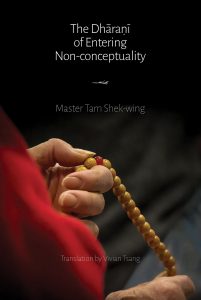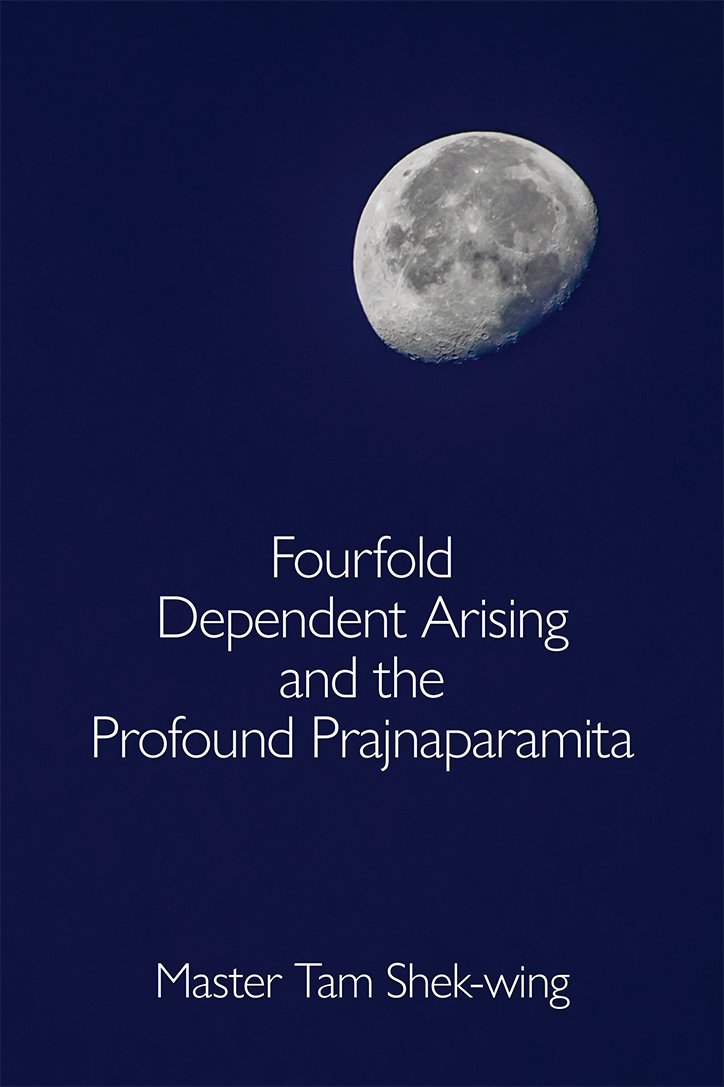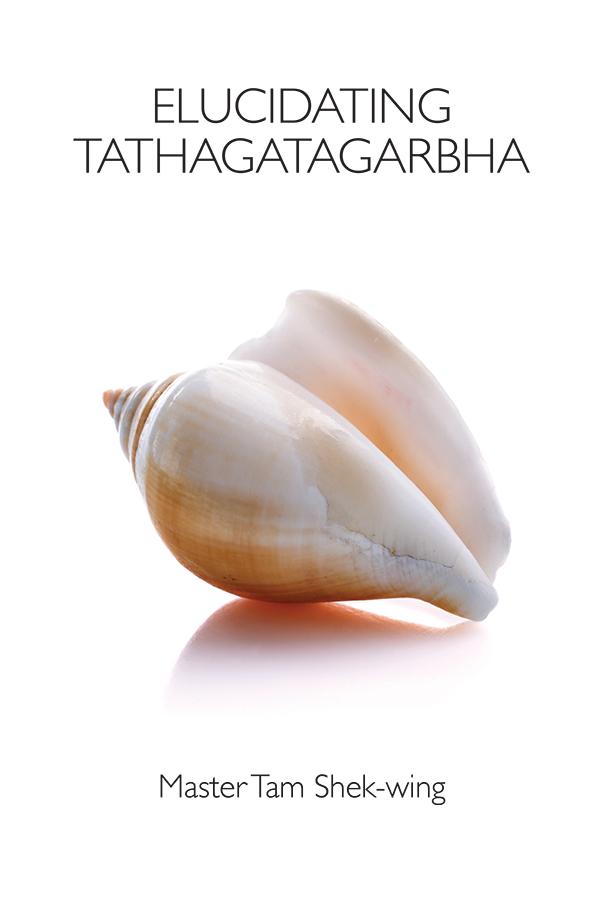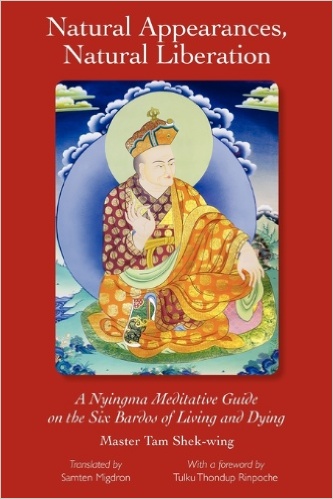Perfect Enlightenment 26: Buddha Teaches 25 Expedient Practices, Part 5
Show scripture (Chinese). 「若諸菩薩以寂滅力而起至靜,住於清淨;此菩薩者,名先修禪那,後修奢摩他。 「若諸菩薩以寂滅力而起作用,於一切境寂用隨順;此菩薩者,名先修禪那,後修三摩鉢提。 「若諸菩薩以寂滅力種種自性,安於靜慮,而起變化;此菩薩者,名先修禪那,中修奢摩他,後修三摩鉢提。 「若諸菩薩以寂滅力無作自性起於作用,清淨境界歸於靜慮;此菩薩者,名先修禪那,中修三摩鉢提,後修奢摩他。 「若諸菩薩以寂滅力種種清淨,而住靜慮起於變化;此菩薩者,名先修禪那,齊修奢摩他、三摩鉢提。 「若諸菩薩以寂滅力資於至靜,而起變化;此菩薩者,名齊修禪那、奢摩他,後修三摩鉢提。 「若諸菩薩以寂滅力資於變化,而起至靜清明境慧;此菩薩者,名齊修禪那、三摩鉢提,後修奢摩他。 Show scripture (English). “Some bodhisattvas use the power of extinction to arise perfect quiescence and abide in purity. These bodhisattvas are called practitioners of dhyāna first and śamatha next.” “Some bodhisattvas use the power of extinction, yet enter activity, and this quiescent function is practiced within all realms. These bodhisattvas are called practitioners of dhyāna first and samāpatti next.” “Some bodhisattvas use the various self natures of extinction power, and abiding in mental quiescence, produce transformations. These bodhisattvas are called practitioners of dhyāna first, śamatha next and samāpatti last.” “Some bodhisattvas use the inactive self-nature of extinction power to engage in activity, then purify the objective realm and return to quiescence. These bodhisattvas are called practitioners of dhyāna first, samāpatti next and śamatha last.” “Some bodhisattvas use the various purity of extinction power, then, abiding in mental equipoise, they produce transformations. These bodhisattvas are called practitioners of dhyāna first, followed by simultaneous śamatha and samāpatti.” “Some bodhisattvas use extinction power to aid in the attainment of quiescence, and then give rise to transformations. These bodhisattvas are called practitioners of simultaneous dhyāna and śamatha, followed by samāpatti.” “Some bodhisattvas use extinction power to aid in transformation, producing perfect quiescence which purifies and illuminates the world. These bodhisattvas are called simultaneous practitioners of dhyāna and samāpatti, followed by śamatha.” Buddha answers Voice of Discernment by teaching the twenty-five expedient means. We have now introduced seventeen of them, and will proceed to the third set of alternating practices, the 18th to the 24th with dhyāna as the main practice. While this set is said to have dhyāna as the main practice, they are not dhyāna only practices. Here the practitioner begins with dhyāna, then one proceeds to the other two. As well, within dhyāna itself, it is also inclusive of the other two practices. As discussed before, the dhyāna practice is in fact śamatha of dhyāna, samāpatti of dhyāna, dhyāna of dhyāna. 18. Dhyāna first and śamatha next. In the tantric practice, this is equivalent to the coalescence of development and perfection as the main practice, the practitioner at this point should already be familiar with the development dharma and the perfection dharma. In the practice of the coalescence, one falls into neither quiescence nor illusion to enter non-conceptuality. Yet, the practitioner may fall into the expectation of fruition through the practice, and thus may not enter “the liberation of wishlessness.” Since there remains attachment to dharma, with an additional śamatha practice, one rests in the realm of non-dwelling, leading to attainment. 19. Dhyāna first and samāpatti next. In the tantric practice, the practitioner here attains cessation-extinction through the coalescence of development and perfection. But if the coalescent realm becomes dull and lifeless, then the function of samāpatti should be awakened. Focus on the vitality aspect of the virtue of dharmakaya, use the life force to transform the conventional world. This is the practice of perfection dharma to meditate on the illusion, such that the coalescent realm one enters becomes lively and energetic. The realm can at this point justifiably be the vivacious coalescent realm of Buddha-Within. The samādhi here is called the “spirited activities of samādhi” (靈動三摩地). It is a kind of antidote to a practice that has become lifeless (“withered practice” or 枯禪). 20. Dhyāna first, śamatha next and samāpatti last. In the tantric practice, in practicing the coalescence of development and perfection, if one is biased towards the virtue of dharmakaya, one has to practice the development dharma; but for one to not become attached to transcending the illusory, there is further need to practice the perfection dharma to enter various illusory matters, perfecting dharma activities beneficial to sentient beings. This is also a form of “spirited activities of samādhi” (靈動三摩地). 21. Dhyāna first, samāpatti next and śamatha last. In the tantric practice, in the coalescent practice, if one is biased towards dharmakaya, the perfection dharma is practiced such that one does not become attached to cessation-extinction. A subsequent practice of śamatha allows the illusory realm to reintegrate with quiescence so as to transcend the manifestation as illusory, nor is it a manifestation mired in sophistry and conceptuality. More concretely, one abides in the coalescent realm of development and perfection by maintaining the pride of the self-manifested deity, one is biased towards neither luminosity nor the self-deity. 22. Dhyāna first, followed by simultaneous śamatha and samāpatti. In the tantric practice, practicing the coalescence of development and perfection, one maintains the pride of the self-deity to abide in luminosity. To prevent dullness in the self-deity’s state-of-mind, or dullness in the luminous realm, one practices development dharma and perfection dharma simultaneously. Cessation-extinction attains vitality through utmost quiescence, the utmost quiescence through cessation-extinction one becomes at ease. This is the feature of this type of practice. One can get a glimpse of this realm through Ghanavyūhasūtra. 23. Simultaneous dhyana and śamatha, followed by samāpatti. 23. Simultaneous dhyana and śamatha, followed by samāpatti. Begin with dhyāna as before, but one also practices cessation. This is a realm of simultaneous cessation-extinction and utmost quiescence, where one attains vitality through the utmost quiescence, the utmost quiescence through cessation-extinction one becomes at ease. This is the feature of this type of practice. One can get a glimpse of this realm from Ghanavyūhasūtra. Cessation-extinction through utmost quiescence to attain vitality is analogous to bodhisattvas entering the kingdom of Ghanavyūha (dense array of ornaments). This entrance can be said to be through cessation-extinction. In the realm of Ghanavyūha, buddhas and bodhisattvas are seen in dense retinues, an arising through cessation-extinction. The ability to give rise is vitality; the utmost quiescence through cessation-extinction one becomes at ease, it is analogous to the scripture says, bodhisattvas upon entering the kingdom see a little buddha seated inside a large buddha. This is what is being at ease in the realm of cessation-extinction. All buddhas and bodhisattvas manifest the body of solemn adornment, regardless of big or small, they are at ease in the transformation. From the realm described above, one further practices samāpatti, relying on the power of realization, one furthers enters illusory activities, transforming vitality to the benefits of sentient beings. In the tantric practice, practitioners commit to simultaneous meditation of coalescence of development and perfection, and development dharma. Here, the development dharma is divided into three stages to be part of the simultaneous practice with the coalescence of development and perfection. The three stages are development of development, perfection of development, coalescence of development. Relying on the power of the simultaneous practice, one can transcend both quiescence and illusion, through transcending sophistry and conceptuality (utmost quiescence), all phenomena arise like illusion. In other words, the awaken awareness coalesces with development, in the nature of perfect enlightenment, there is the arising of all phenomena. A further practice of perfection dharma, given the arising of all phenomena, perfection pervades everywhere. One becomes at ease. 24. Simultaneous practice of dhyāna and samāpatti, followed by śamatha. In the tantric practice, this is analogous to the simultaneous practice of the coalescent practice and the perfection dharma. Here the perfection dharma is also divided into three stages, the development of perfection, the perfection of perfection, the coalescence of perfection. Relying on the power of the simultaneous practice, the practitioner attains cessation-extinction and illusion-like simultaneously. Subsequently, one integrates this meditation realm with the utmost quiescence, perfectly realize the Buddha-Within, the coalescent realm of wisdom and consciousness. Cessation-extinction is the wisdom realm, illusion-like is the consciousness realm. The simultaneous integration with utmost quiescence, one surpasses the conceptuality of wisdom and consciousness. From the ultimate transcendence from conceptuality, one realizes perfect enlightenment.Chinese:
English:
Commentary:



